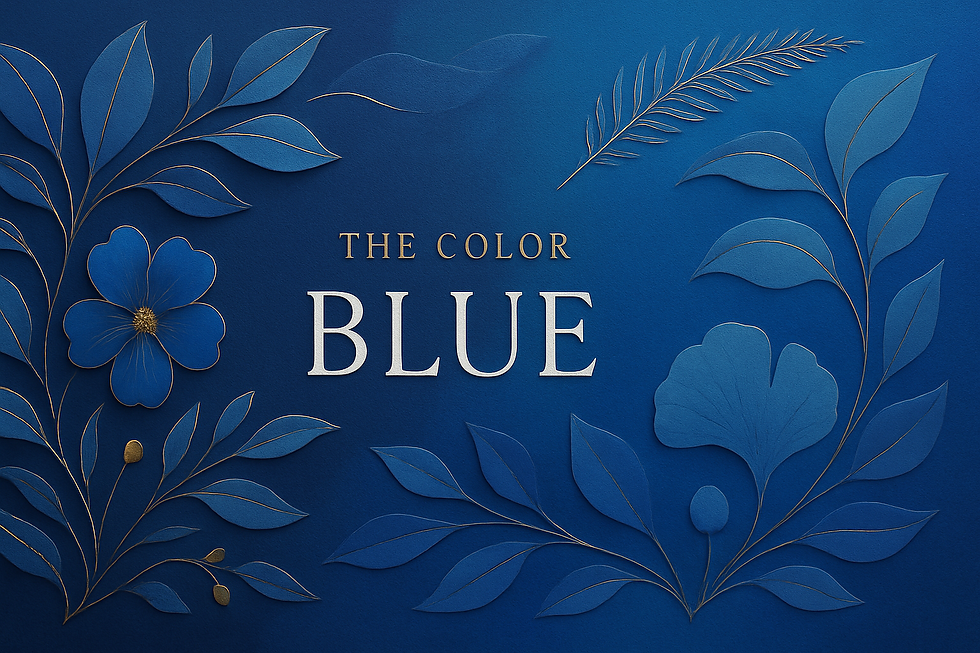Gray: Everything to Know About the Color Gray
- The Finest Writer

- May 4
- 4 min read

Welcome to our refined guide on the versatile and sophisticated color gray. This article will explore gray's meaning, symbolism, history, and its role across art, design, fashion, and culture.
Gray is often seen as neutral, balanced, and timeless. It exists between black and white, embodying subtle strength, calm, and modernity.
Whether it's dove gray or a deep charcoal, this color offers endless possibilities for design and emotional expression.
Whether you're researching gray for your next creative project, an interior space, or simply curious about its more profound significance, this article will provide everything you need to know about it.
What Color is Gray?

Gray is an achromatic color that lacks a hue and falls between black and white. It is created by mixing these two colors in varying proportions. The more black added, the darker the gray becomes; the more white added, the lighter it gets.
Gray can range from soft silvery tones to dark charcoals. It often carries connotations of neutrality, sophistication, and calmness, making it a popular choice in fashion, interior design, and technology.
How to Make Gray?

Gray is created by blending black and white together. Adjusting the ratio changes the shade, creating a spectrum from light gray to dark gray.
Gray RGB Values (standard gray)
Red: 128
Green: 128
Blue: 128
Gray HEX Color Code
The HEX code for standard gray is #808080.
Gray CMYK Code
Cyan: 0%
Magenta: 0%
Yellow: 0%
Black: 50%
Paint Mixing to Create Gray
To make gray with paint, mix equal parts black and white. You can adjust the tone by adding more black for a deeper gray or more white for a lighter shade. To create warmer grays, add a small amount of brown or red. For cooler grays, add a touch of blue.
Light and Perception of Gray
Gray’s appearance changes depending on lighting conditions and surrounding colors. It can take on a taupe or beige tone in warm light, while in cooler light, it may appear bluish or silvery.
What Colors Match Gray?

Gray is one of the most adaptable colors and pairs well with almost any other color. Here are some standout combinations:
Gray and White: This clean and modern pairing creates a sense of calm and spaciousness.
Gray and Black: A monochromatic duo that feels sleek, strong, and timeless.
Gray and Yellow: The vibrancy of yellow contrasts beautifully with gray’s neutrality, creating an energetic and balanced look.
Gray and Pink: Soft pink adds warmth and playfulness to gray’s coolness, making the combination feel inviting and contemporary.
Gray and Navy Blue: Navy adds depth and richness, while gray keeps the palette grounded.
Gray and Green: Especially with shades like sage or emerald, green brings life to gray’s neutrality, giving a refreshing and harmonious combination.
What is Gray’s Complementary Color?

Gray does not have a traditional complementary color because it is achromatic and lacks hue. However, gray often acts as a neutral background in design, allowing brighter colors to pop. It complements almost any hue, with yellow being one of the most visually striking pairings due to their contrast.
What Colors are Similar to Gray?

Gray shares qualities with several other neutral shades, offering subtle variations in tone and warmth:
Charcoal: A deep, almost-black gray that adds drama and depth.
Silver: A light, metallic gray with reflective properties that feels sleek and modern.
Slate: A medium-dark gray with hints of blue or green, often used in architecture and design.
Pewter: A mid-tone gray with a slight metallic sheen, commonly found in decorative objects.
Taupe: A warm gray with brown undertones, offering a cozy and earthy feel.
What Does Gray Symbolize?

Gray carries many symbolic meanings, often influenced by its context and shade. Here are some of its most common associations:
Neutrality and Balance: Gray sits between black and white, symbolizing impartiality and balance.
Sophistication and Elegance: Gray is often used in fashion and design to convey professionalism and understated elegance.
Calmness and Stability: Its muted quality promotes relaxation and focus, making it a popular choice for interiors and workspaces.
Formality and Conservatism: Gray can suggest seriousness and formality, often used in business attire and corporate branding.
Mystery and Ambiguity: In some contexts, gray represents the unknown or the in-between, neither black nor white, right nor wrong.
Cultural interpretations can vary. In some traditions, gray is associated with wisdom and age, while in others, it may symbolize loss or mourning.
The History of Gray

Gray has been used throughout history in art, fashion, and architecture. Here are some key moments:
Ancient and Classical Times: Gray was present in early pottery, stone carvings, and architecture. Natural gray materials like stone and clay were widely used.
Middle Ages: In medieval Europe, gray robes were worn by monks and friars as a symbol of humility and simplicity.
18th and 19th Centuries: Gray became popular in fashion and interior design, often associated with sophistication and formality. It was a favored color in industrial architecture and urban design.
20th Century and Modern Use: Gray became prominent in modernism, minimalism, and industrial design. It became a fashion, technology, and branding staple, symbolizing sleekness, innovation, and neutrality.
Today: Gray remains a dominant color in everything from fashion and interiors to technology and automotive design.
Gray is more than just a neutral. It is a color of balance, calm, and sophistication. Whether you use soft dove gray for a serene space or deep charcoal for a bold statement, gray offers versatility and timeless appeal.Gray: Everything to Know About the Color Gray




